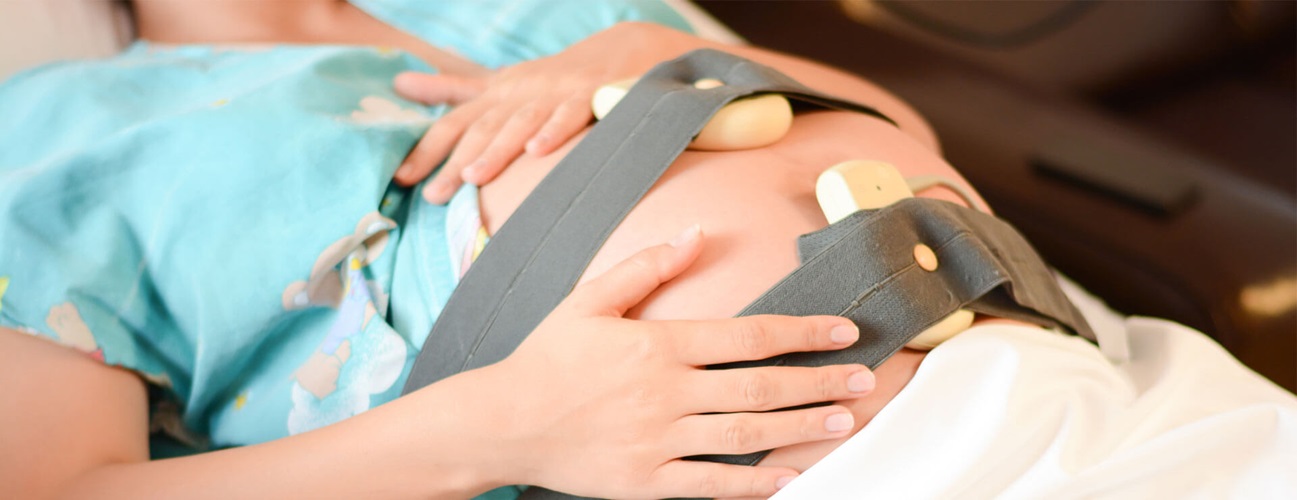Biophysical Profile: BPP Ultrasound and Nonstress Test
A biophysical profile, or BPP, is a simple, painless procedure that combines ultrasound imaging with a nonstress test to assess the well-being of a fetus (developing baby) in the uterus.
What You Need to Know
- A biophysical profile is typically performed after 28 weeks of pregnancy, and repeated BPPs may be scheduled for once or twice a week.
- For the nonstress portion of the test, a fetal monitor measures the baby’s heartbeat while moving and at rest.
- For the BPP ultrasound, the practitioner uses imaging to observe the baby moving in the uterus and how much fluid is surrounding the baby.
- The BPP may be performed by a nurse specializing in fetal testing, and it takes 30 to 70 minutes to complete.
What is a biophysical profile?
A biophysical profile is a way to check on overall fetal health. It consists of two painless, noninvasive tests: fetal monitoring and ultrasound. Typically, it takes about 30 to 70 minutes to complete.
The biophysical profile helps practitioners observe the fetus’s heart rate, breathing, movement, muscle tone, and the amount of amniotic fluid surrounding the fetus in the uterus. A BPP may be scheduled once or twice a week, and may be combined with your obstetrician visits when possible.
Why is a biophysical profile recommended?
The test may be recommended once you have passed 28 weeks of pregnancy, especially if:
- You have certain health conditions, such as:
- diabetes
- hypertension (high blood pressure), including preeclampsia
- kidney disease
- severe asthma
- You are pregnant with more than one baby.
- You have experienced a stillbirth in a prior pregnancy.
- The baby appears smaller than expected at a particular stage of your pregnancy.
- The baby’s movements have slowed down or stopped.
- You are past your due date (at 41 weeks or beyond).
- There is too much or too little fluid around the baby.
How do I prepare for a BPP?
The tests are noninvasive and do not require advance preparation. However, your practitioner may suggest that you eat before the test, since some babies are more active after the mother has eaten. You will be more comfortable if you empty your bladder before the biophysical profile.
Biophysical Profile: What Happens
Here’s what can you expect during the test:
Nonstress Test
For monitoring the baby’s heart rate, you will be positioned lying down on your left side.
The nurse or practitioner will place two monitor pieces on your abdomen, which are held in position by elastic belts. One piece records the baby’s heartbeat and the other records any contractions of the uterus.
The practitioner administering the test will be looking at the fetus’s movement and heart rate. Just as your heart beats faster when you run up a flight of stairs, the fetus’s heart should beat faster when kicking and moving.
If the test does not record at least two increases in fetal heart rate, it may be because the fetus is asleep. The practitioner may awaken the fetus with a buzzer or other sound outside your belly.
BPP Ultrasound
For the second part of the test, the practitioner will use an ultrasound machine to see the fetus’s position and watch for movement.
The test is simple and takes about 30 minutes. You lie down on a table and the practitioner glides a transducer device over your abdomen. The transducer sends harmless sound waves into your body that echo off structures inside, forming images of the uterus and fetus.
The ultrasound will also help visualize the pocket of amniotic fluid in the uterus and ensure that there is an appropriate amount for your stage of pregnancy.
After a BPP
The test will look for fetal activity and calculate points based on heart rate accelerations, amniotic fluid volume and fetal movement and muscle tone. Activities that add points include the fetus opening the mouth, moving the arms or legs, or twisting and turning in the uterus. Babies also “practice” breathing motions as they get ready to be born, and this activity adds to the score.
The results of the biophysical profile are added for a score between zero and 10. A score between eight and 10 is considered normal. A lower score may suggest a possible problem that could call for more evaluation. A score of four or less may call for pregnancy monitoring or inducement of labor.
It is important to remember that biophysical profile scores can be affected by factors such as fetal prematurity and the mother’s use of corticosteroids, which can slow down fetal activity.






